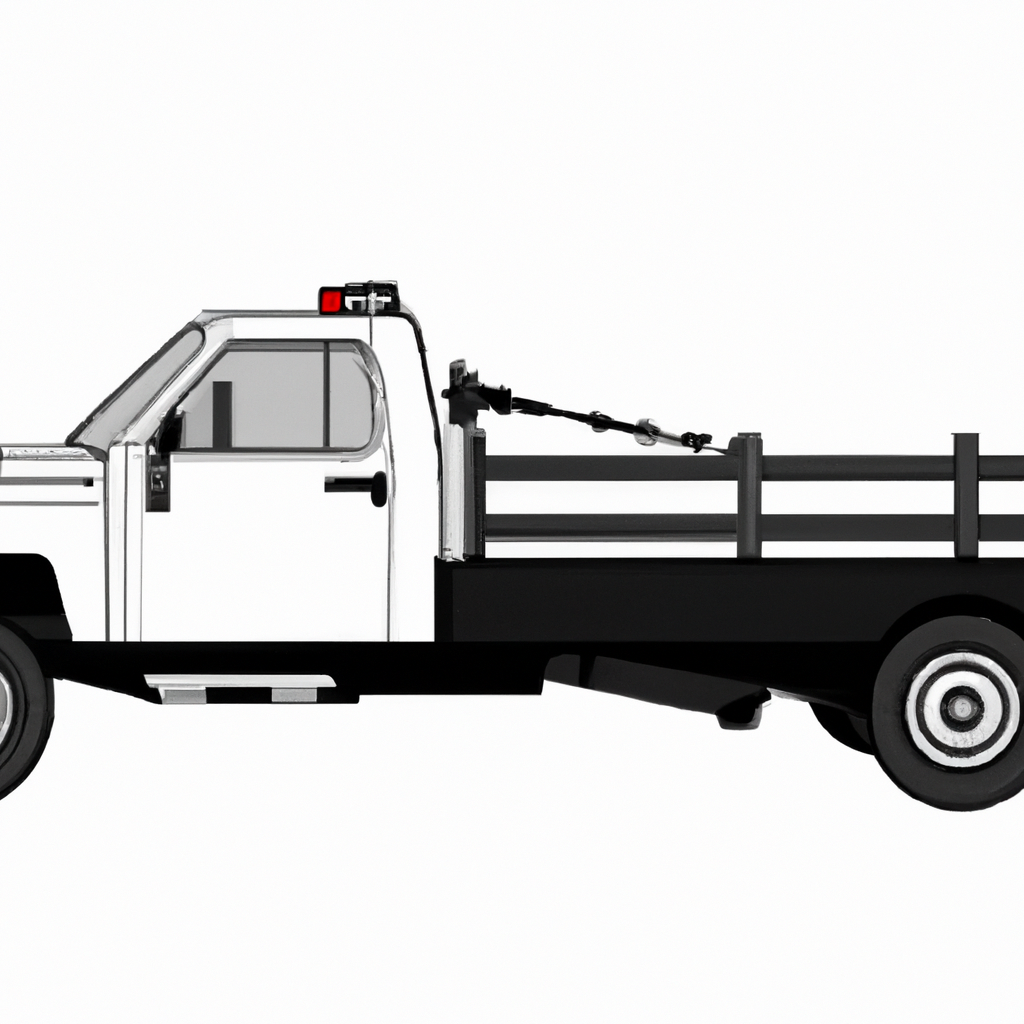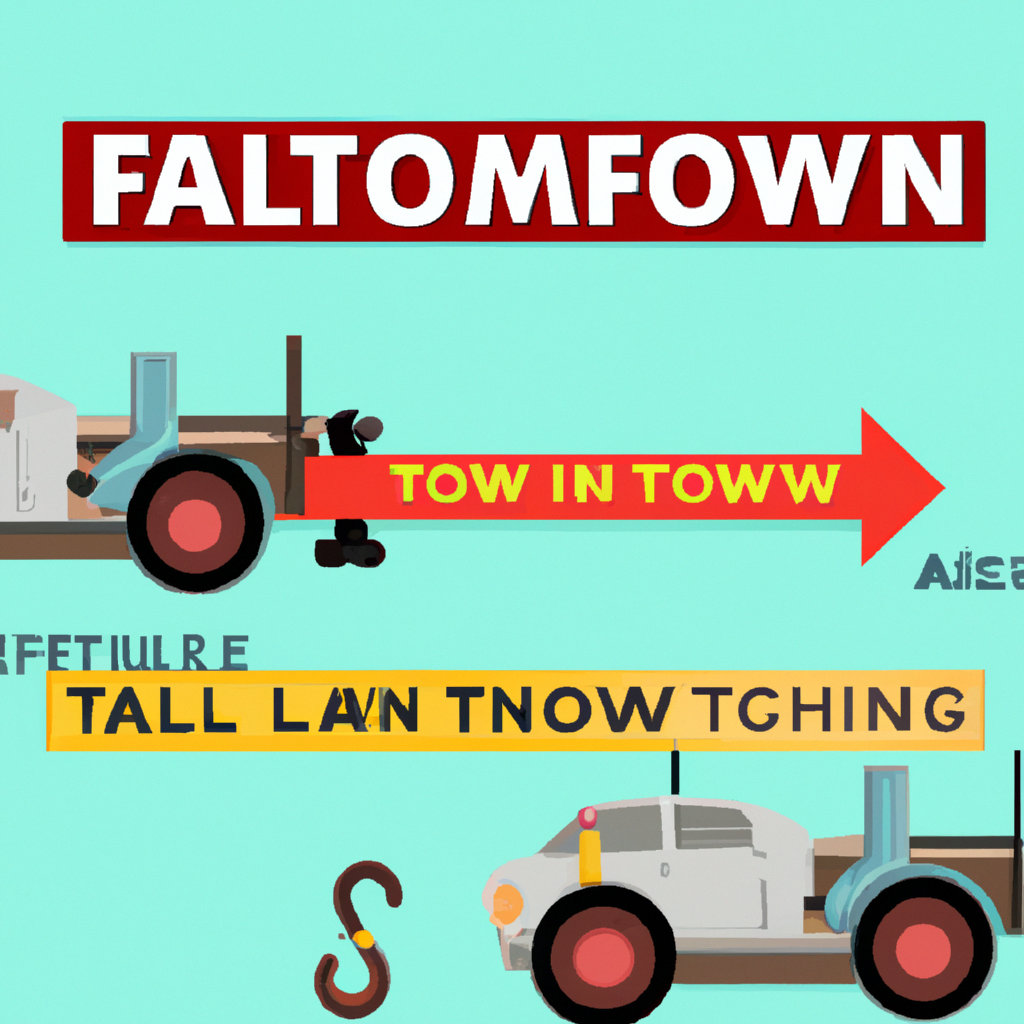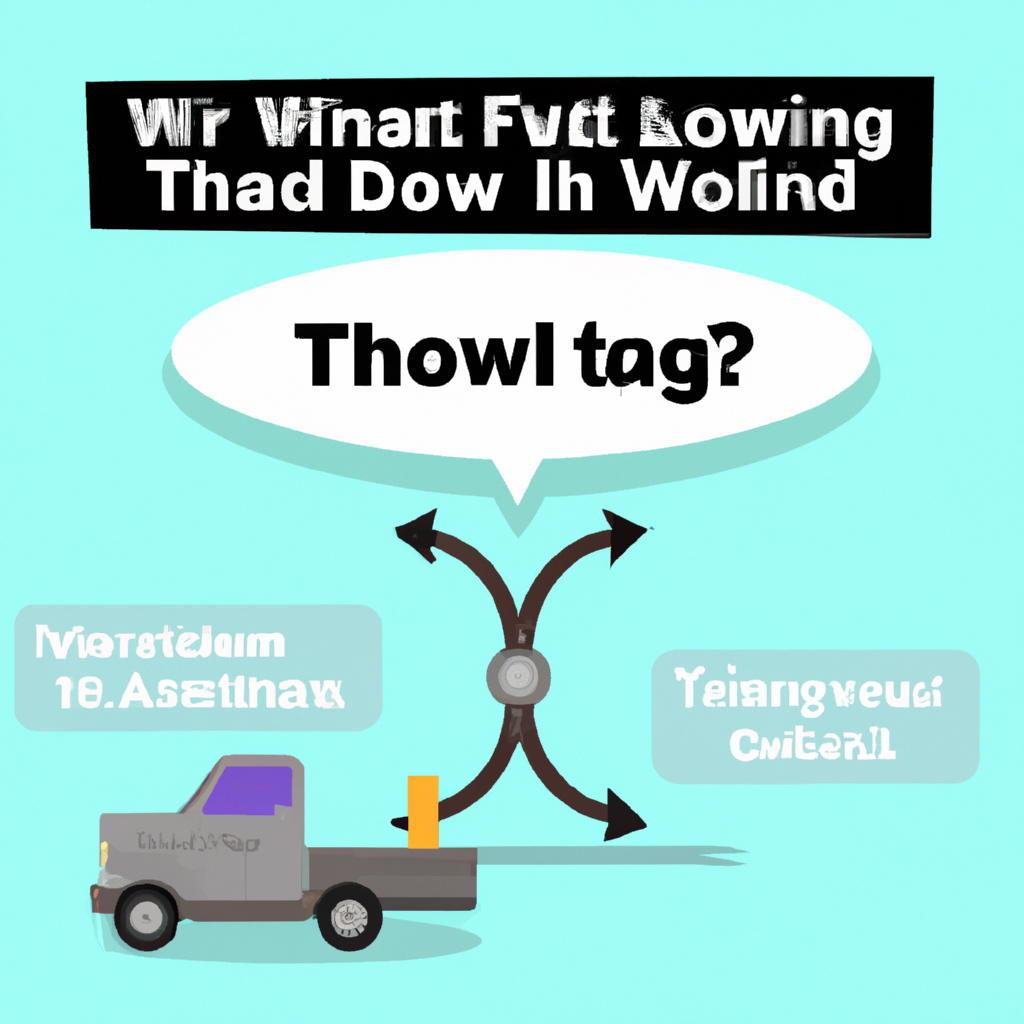Flat towing, also known as dinghy towing, involves towing a car behind a motorhome or an RV with all four wheels on the ground, without the need for a trailer or a dolly. This method of towing has gained popularity among recreational vehicle enthusiasts due to its convenience and cost-effectiveness. It allows for a seamless transition between driving your motorhome and using your car at your destination without the need for extra equipment or storage. In this article, we will explore the concept of flat towing, its benefits, and key considerations for those interested in this towing method.
What Is Flat Towing?

Definition of Flat Towing
Flat towing, also known as dinghy towing or four-down towing, is a method of towing a vehicle behind a motorhome or another larger vehicle without using a trailer. In flat towing, the towed vehicle is connected to the towing vehicle using a tow bar, which allows all four wheels of the towed vehicle to be in contact with the ground.
Benefits of Flat Towing
Flat towing offers several advantages for those who want to tow their vehicles. Firstly, it eliminates the need for a separate trailer, making it a more convenient and cost-effective option. It also allows for easier maneuverability, especially in tight spaces such as campsites or parking lots. Flat towing is also generally considered to provide a smoother and more stable towing experience compared to towing with a dolly or trailer.

Difference Between Flat Towing and Tow Dolly
While flat towing and tow dolly both involve towing a vehicle behind another vehicle, there are some key differences between the two methods. In flat towing, all four wheels of the towed vehicle remain in contact with the ground, whereas with a tow dolly, only the front wheels of the towed vehicle are on the ground, while the rear wheels are elevated on the dolly.
Flat towing generally requires less equipment and is easier to set up compared to using a tow dolly. However, not all vehicles are suitable for flat towing, whereas a wider range of vehicles can be towed using a tow dolly. Additionally, using a tow dolly might be preferable if your vehicle is not designed for flat towing or if you have concerns about wear and tear on your vehicle’s drivetrain.
Types of Vehicles Suitable for Flat Towing
Not all vehicles are suitable for flat towing, as it requires the towed vehicle to have a specific set of characteristics to ensure a safe and successful towing experience. Typically, vehicles with manual transmissions, four-wheel drive vehicles with a two-speed transfer case that can be put in neutral, or vehicles with a specific flat tow mode indicated in the owner’s manual are suitable for flat towing.
It’s essential to consult your vehicle’s owner’s manual to determine if it is flat towable and what procedures need to be followed for proper flat towing. If your vehicle is not suitable for flat towing, you may need to explore alternative towing methods such as using a tow dolly or trailer.

Equipment Required for Flat Towing
To flat tow a vehicle, you will need specific equipment to ensure a safe and secure towing setup. The essential equipment includes a tow bar, base plates or brackets mounted to the towed vehicle, safety cables, and wiring for lights on the towed vehicle. Additionally, you may need supplemental braking systems, depending on the weight of the towed vehicle and legal requirements.
It is crucial to invest in high-quality towing equipment that is compatible with your specific towing setup and meets all safety standards. Always follow the manufacturer’s instructions when installing and using towing equipment to ensure proper function and maximum safety.
Safety Considerations for Flat Towing
Before embarking on a flat towing journey, there are several critical safety considerations to keep in mind. Firstly, ensure that your towed vehicle is within the weight limits specified by your towing vehicle and the towing equipment you are using. Overloading the towed vehicle can lead to instability and control issues while towing.
Inspecting and maintaining your towing equipment regularly is essential to minimize the risk of equipment failure during towing. Check for any signs of wear, damage, or loose components before each trip, and address any issues promptly.
Properly securing your towed vehicle is crucial to prevent it from coming loose or swaying while on the road. Ensure that all connections are tight, use appropriate safety cables, and double-check the attachment points before starting your journey. Additionally, make sure all lights on the towed vehicle are working correctly to maintain visibility and comply with traffic regulations.

Step-by-Step Guide for Flat Towing
To flat tow a vehicle successfully, it is important to follow a step-by-step process to ensure a safe and secure setup. Here is a general guide to flat towing:
- Confirm that your vehicle is suitable for flat towing by consulting the owner’s manual.
- Gather all the necessary equipment, including a tow bar, base plates or brackets, safety cables, and wiring.
- Install the base plates or brackets onto the front of the towed vehicle following the manufacturer’s instructions.
- Attach the tow bar to both the towing vehicle and the base plates on the towed vehicle, ensuring all connections are secure.
- Connect the safety cables between the towing vehicle and the towed vehicle, crossing them to create an additional safety measure.
- Connect the wiring for the lights on the towed vehicle, ensuring all lights are functioning correctly.
- Check all connections, attachments, and lights once again to ensure everything is secure and operational.
- Follow the specific procedures outlined in your vehicle’s owner’s manual to properly prepare the towed vehicle for flat towing.
- Once everything is set up, test the towing setup by driving a short distance at low speeds to check for any issues or abnormal behavior.
- When on the road, drive attentively and allow for extra braking distance, as the added weight of the towed vehicle may affect the stopping power of the towing vehicle.
- Regularly monitor the towing setup during the journey, periodically checking for any signs of loosening or instability.
- When you reach your destination, safely disconnect and store the towing equipment until it is needed again.
Tips for a Successful Flat Towing Experience
To ensure a successful flat towing experience, consider the following tips:
- Familiarize yourself with the specific requirements and limitations of your towing setup and the towed vehicle by consulting the owner’s manuals.
- Practice connecting and disconnecting the towing equipment to become comfortable with the process before your first trip.
- Plan your towing routes in advance, taking into account any roads or areas that may have restrictions or limitations on towing.
- Before each trip, perform a thorough inspection of the towing equipment and the towed vehicle to ensure everything is in proper working order.
- Consider investing in supplemental braking systems to enhance the braking performance of the towing setup.
- Observe all traffic regulations and drive defensively to ensure the safety of yourself, your passengers, and other road users.
Common Flat Towing Mistakes to Avoid
Flat towing can be a complex process, and there are several common mistakes that should be avoided. Some of these include:
- Exceeding the weight limits of the towing vehicle or the towing equipment.
- Failing to properly secure the towed vehicle, leading to detachment or swaying while on the road.
- Neglecting to inspect and maintain the towing equipment regularly, increasing the risk of equipment failure.
- Ignoring or misinterpreting the specific procedures outlined in the vehicle’s owner’s manual for flat towing preparation.
- Underestimating the additional length and weight of the towing setup, which may affect maneuverability and stopping distances.
Conclusion
Flat towing offers a convenient and efficient method of towing a vehicle behind a larger vehicle without the need for a trailer. However, it is essential to ensure that your vehicle is suitable for flat towing and that you have the correct equipment and follow all safety guidelines. By understanding the process, conducting proper maintenance, and following the necessary steps, you can have a safe and successful flat towing experience.
